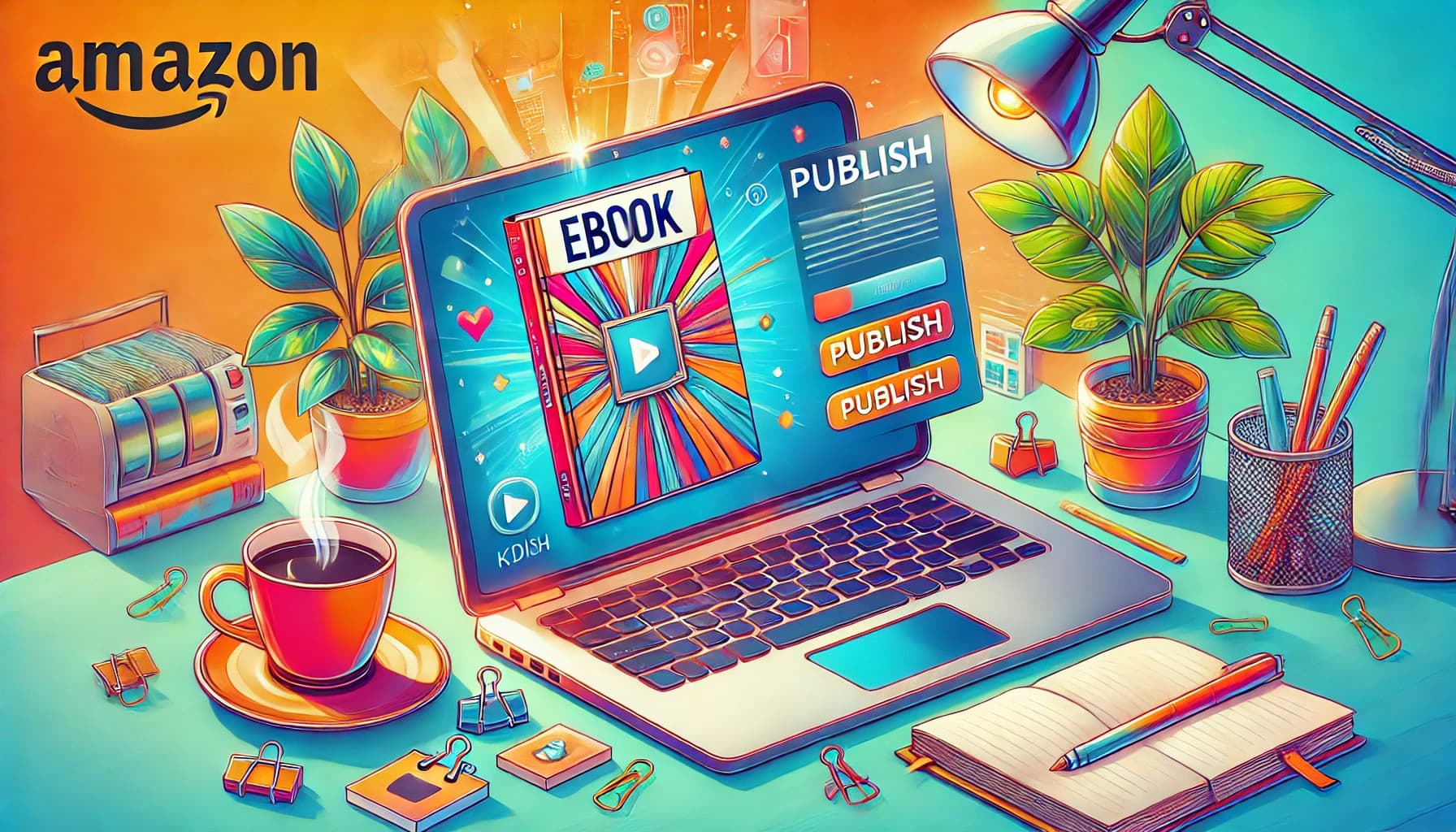Table of Contents
If you're thinking about working with others on writing projects, it can feel overwhelming to figure out the best way to team up. You might worry about who gets what share or how everyone stays on the same page. Keep reading, and you'll discover practical ways to make collaborations smooth and successful, whether you're co-writing, joining groups, or using new tools.
By sticking with me, you'll see different models that fit different goals and styles, along with tips to keep everything running smoothly. I’ll walk you through simple strategies you can start using today to make your author collaborations more fun and productive — all without the headaches.
Here's a quick look at what we'll cover: choosing the right partnership style, working together on projects, building author groups, using shared worlds, and even teaming up for marketing or using AI tools. It’s a practical guide to help you find what works best for you!
Key Takeaways
– Choose collaboration styles that match your goals, like co-writing for shared ownership or group marketing to expand your reach. Clearly define what you want to achieve to pick the best model.
– Co-writing involves working closely with others on projects, sharing responsibilities and ensuring clear communication to avoid misunderstandings. Dividing roles helps keep everyone accountable.
– Anthologies and shared universes let multiple authors contribute stories in a themed setting or ongoing world, but require planning to keep details consistent and cohesive.
– Building author groups or cooperatives allows resource sharing and joint marketing efforts, helping indie authors grow without traditional publishers. Formal agreements ensure clarity on profits and duties.
– Collaborate on marketing campaigns like bundled sales or social media events to reach larger audiences and share costs. Coordination and consistent messaging boost effectiveness.
– Use AI tools to assist with tasks like outlining or editing, freeing up time for storytelling. Balance AI input with your personal voice to keep your work authentic.
– Establish clear structures like shared calendars, task management tools, and regular check-ins to stay organized and track progress as a team.
– Be open to feedback and adaptable—good partnerships thrive on honest communication and willingness to adjust plans as needed.
– Setting up solid agreements upfront on rights, profit sharing, and roles helps prevent issues later. Use simple language and consider legal review if necessary.
– Grow your network by joining writing groups, attending events, and connecting online. Find partners who share your goals and style, and build trust over time.
– Keep long-term collaborations exciting by celebrating milestones, trying new genres, and supporting each other through ups and downs.
– Promote joint projects via websites, social media, and publishing platforms. Consistent updates and engaging content help attract and keep readers.

Choose the Right Collaboration Model for Your Goals
Before jumping into any kind of collaboration, it's key to define what you want to achieve.
Are you looking to co-write a single book, build an anthology, or create a series?
Your goals will shape the best collaboration approach for you.
For example, if you're aiming for shared profit and equal creative input, a co-writing partnership may suit you.
On the other hand, if you're interested in expanding your reach, group marketing or cooperative publishing might be a better fit.
Knowing your aims helps you pick a model that maximizes your strengths and resources.
Co-Writing and Co-Authoring for Shared Projects
Co-writing means working side-by-side with one or more authors to produce a project.
This can be anything from a standalone book to a series, where partners share both the creative and the business responsibilities.
In many cases, co-authors agree on equal rights and earnings, making this a balanced partnership.
Breaking the project into parts is common: one writer might handle characters while another manages plot or research.
Another strategy is alternating chapters or co-developing story arcs, which keeps everyone engaged and accountable.
Clear communication and role division are crucial to avoid misunderstandings and ensure a smooth process.
Using Anthologies and Shared Universes to Collaborate
Anthologies are collections where multiple authors contribute stories around a common theme or genre.
This setup allows authors to showcase their unique style within a familiar setting.
Shared universes take it a step further by building a consistent world in which several writers contribute entries or stories.
For instance, a fantasy universe with different authors writing prequels, sequels, or side stories can attract diverse audiences.
The challenge here is maintaining consistency—co-authors need to agree on details like character histories and world rules.
Regular collaboration and detailed planning help keep the universe cohesive and engaging for readers.
Building Author Groups and Cooperative Publishing
Forming an author group or cooperative allows multiple writers to pool their resources.
Members can share costs on editing, cover design, marketing, and distribution.
Profits are divided based on agreed terms, which can be equal or based on contribution.
In a cooperative, members often support one another's works, helping to boost visibility.
This approach works well for indie authors looking to scale without waiting for traditional publishers.
A practical tip is to create formal agreements upfront that detail rights, responsibilities, and profit splits—it's the glue that holds relationships together.
Collaborating Through Group Marketing and Promotions
Group marketing involves authors banding together to promote their books.
Joint sales campaigns, social media takeovers, or giveaways can significantly increase reach.
Co-hosting events like panels or online launches helps tap into each other's audiences naturally.
For example, authors can organize a themed online readathon or a book bundle sale.
The benefit is a wider audience and shared marketing expenses.
Coordinating schedules, pooling mailing lists, and creating shared branding are big wins here.
A secret to success: maintain consistent messaging and support each other's efforts to grow collective visibility.
Incorporating Human and AI Collaboration Tools
Modern author collaborations can leverage AI tools to streamline tasks like brainstorming, editing, or outlining.
AI can suggest plot twists, generate character dialogues, or help with pacing issues—saving you time.
But it’s important to keep a human touch—AI can assist, but your judgment and voice make the work unique.
Balancing AI input with personal editing ensures the story feels authentic.
For example, some authors use AI to generate initial drafts or ideas, then refine and add their personal flair.
Using collaboration platforms that integrate AI features can help track progress and maintain consistency across team members.
If you’re curious, tools like (https://automateed.com/ai-tools-for-marketing/) can be a game-changer.
Setting Up Structures and Support for Collaboration
Effective collaboration often depends on solid structures.
Accountability groups or write-alongs help members stay on track and meet goals.
Organized retreats or writing sprints create dedicated time for focused work on joint projects.
Establishing clear communication channels—like Slack, Trello, or Google Docs—and respecting deadlines make everything run smoothly.
For example, setting weekly check-ins keeps everyone updated and accountable.
Creating a shared calendar or project timeline helps manage expectations.
And don’t forget to have open discussions about expectations and responsibilities—clarity now prevents headaches later.
Staying Open and Flexible to Collaboration
All partnerships need room to breathe—be ready to adapt as projects evolve.
Constructive feedback should be welcomed, and adjustments made accordingly.
Flexibility encourages innovation and keeps collaborators engaged.
For instance, if a writer prefers to handle marketing while another focuses on story development, respect those strengths.
Building trust over time enhances collaboration, making it more enjoyable and productive.
Remember, successful partnerships often hinge on good communication, mutual respect, and a willingness to compromise when needed.
Conclusion: Laying the Groundwork for Successful Partnerships
Choosing the right collaboration model starts with understanding your goals, resources, and working style.
Whether co-writing, sharing universes, or building author groups, clear planning and communication are your best friends.
Using tools—both human and AI—can boost productivity, but the human touch keeps your work genuine.
Take time to draft agreements, set deadlines, and keep feedback channels open.
With the right approach, collaboration can amplify your creativity and expand your reach, making your writing journey more rewarding and less lonely.

11. How to Build Effective Collaborations with Clear Agreements
Setting up good contracts upfront can save lots of trouble later.
Start by clarifying who owns what rights—especially if multiple authors are involved.
Agree on profit splits—equal, percentage-based, or contribution-related.
Decide on roles—who handles editing, marketing, or cover design.
Use simple, straightforward language in your agreements and consider having a lawyer review them if needed.
Having a written plan makes sure everyone is on the same page and reduces arguments down the line.
12. How to Stay Organized and Track Progress as a Team
Coordinate using tools like Trello, Asana, or Google Sheets to assign tasks and deadlines.
Break big projects into manageable milestones to stay motivated.
Regular check-ins—whether weekly calls or quick messages—keep everyone in the loop.
Create shared calendars for deadlines, launch dates, and promotional events.
Use version control in documents to avoid overwriting work or losing changes.
The goal: make sure all team members know what’s next and feel part of the process.
13. Tips for Giving and Receiving Constructive Feedback
Think of feedback as wardrobe advice: helpful but not hurtful.
Always focus on specific points, like plot consistency or character development, rather than personal shortcomings.
Offer suggestions, not just criticisms—what could be improved and how.
Encourage openness—make it clear that honest comments are part of making the best work.
When receiving feedback, stay calm and consider whether it can make your project better.
Sometimes a fresh perspective is all you need to spot issues you missed.
14. How to Overcome Collaboration Challenges and Conflicts
Conflicts happen—that’s normal. The key is finding solutions without causing damage.
Address disagreements early—don’t let them fester.
Practice active listening—make sure you understand where the other person is coming from.
Be flexible—sometimes compromise is better than insisting on your way.
Create a protocol for handling disputes, like involving a neutral third party or taking a break from discussions.
Remember, the aim is a shared goal, not winning an argument.
15. How to Make the Most of AI and Human Strengths in Collaborations
Use AI to handle repetitive or time-consuming tasks—like generating outlines or proofreading.
Let human team members focus on creativity, nuanced editing, and storytelling.
Combine AI suggestions with your personal touch—AI can inspire ideas, but your voice makes the difference.
Experiment with AI tools—try prompts from platforms like (https://automateed.com/how-to-write-a-foreword/) to spark new angles.
Set boundaries—know what tasks are best suited for AI and which require human judgment.
This balance keeps projects efficient and authentic.
16. How to Grow Your Collaboration Network and Find the Right Partners
Join writing groups, attend conferences, or participate in online forums to meet potential collaborators.
Look for people whose goals, styles, and work ethic align with yours.
Start small—perhaps co-writing a short story or novella before jumping into bigger projects.
Use social media like Twitter, Facebook groups, or LinkedIn to connect with fellow authors.
Leverage platforms like (https://reedsy.com/) or (https://www.kboards.com/) to find experienced collaborators.
Building trust and rapport takes time—be patient and open to different perspectives.
17. How to Keep the Passion Alive in Long-Term Collaborations
Sustaining enthusiasm is key to finished projects.
Celebrate small wins together—completing chapters, editing rounds, or marketing milestones.
Rotate roles or try new genres to keep things fresh.
Share feedback and express appreciation—simple thank-yous go a long way.
Schedule playful brainstorming sessions or retreats to reconnect creatively.
Remember why you started and support each other through setbacks—good partnerships grow stronger with shared ups and downs.
18. How to Leverage Online Platforms to Showcase Collaborative Work
Create a dedicated website or social media pages for your joint projects.
Use platforms like Amazon, Wattpad, or Smashwords to publish and promote your work.
Engage with your audience through regular updates, behind-the-scenes content, or Q&As.
Partner with bloggers or reviewers for initial reviews and buzz.
Offer free samples or bundled deals to attract new readers.
The key: stay consistent and authentic to keep engagement high and grow your readership.
FAQs
Select a model that matches your goals, resources, and working style. Consider factors like shared rights, profit sharing, and communication preferences to ensure a good fit for everyone involved.
Set clear roles, rights, and deadlines from the start. Maintain open communication, be flexible, and build trust to ensure smooth collaboration and positive outcomes.
Author groups share resources like editing and marketing, reducing costs. They also pool skills, help promote each other's work, and create opportunities for joint projects and growth.
Tools like AI, shared drives, and communication platforms facilitate collaboration by streamlining writing, editing, and organization, making teamwork more efficient and coordinated across different locations.



